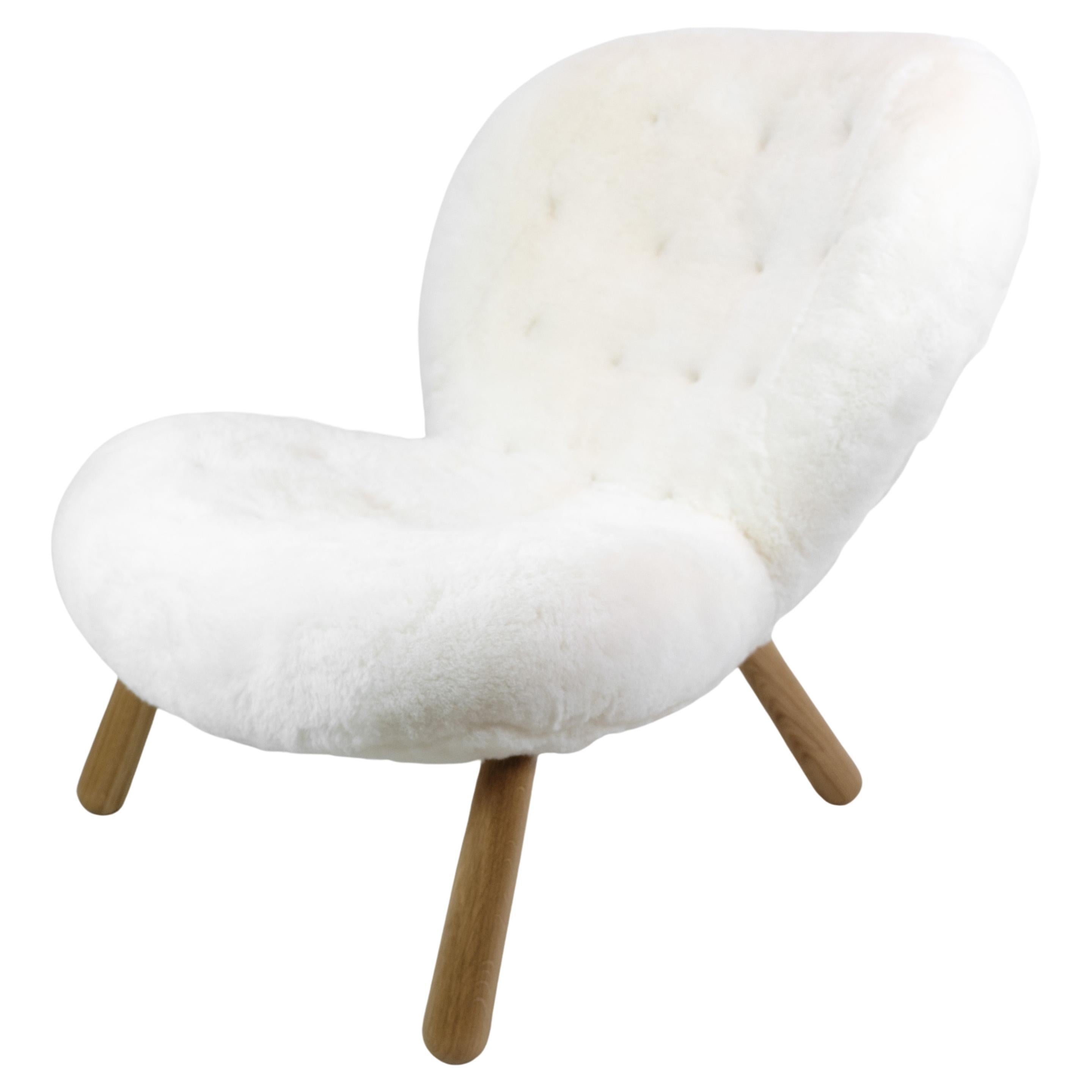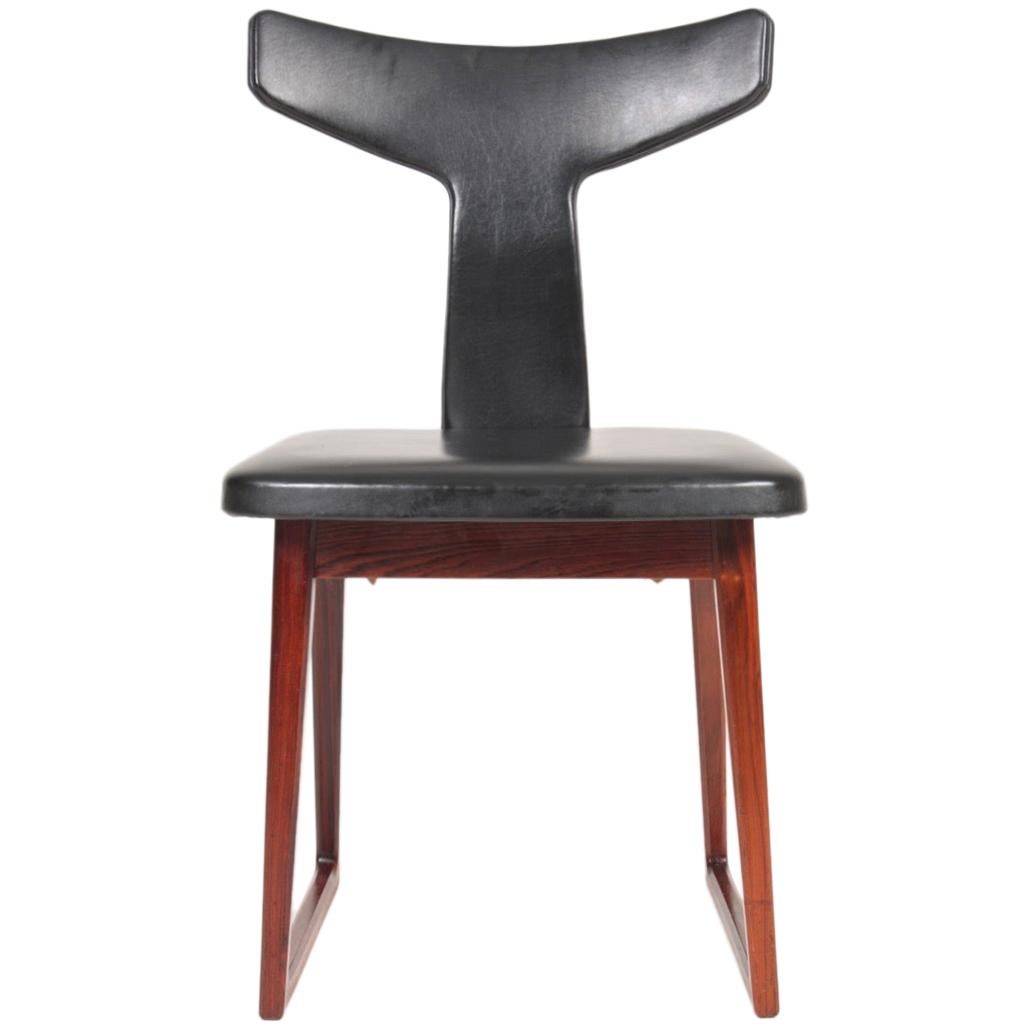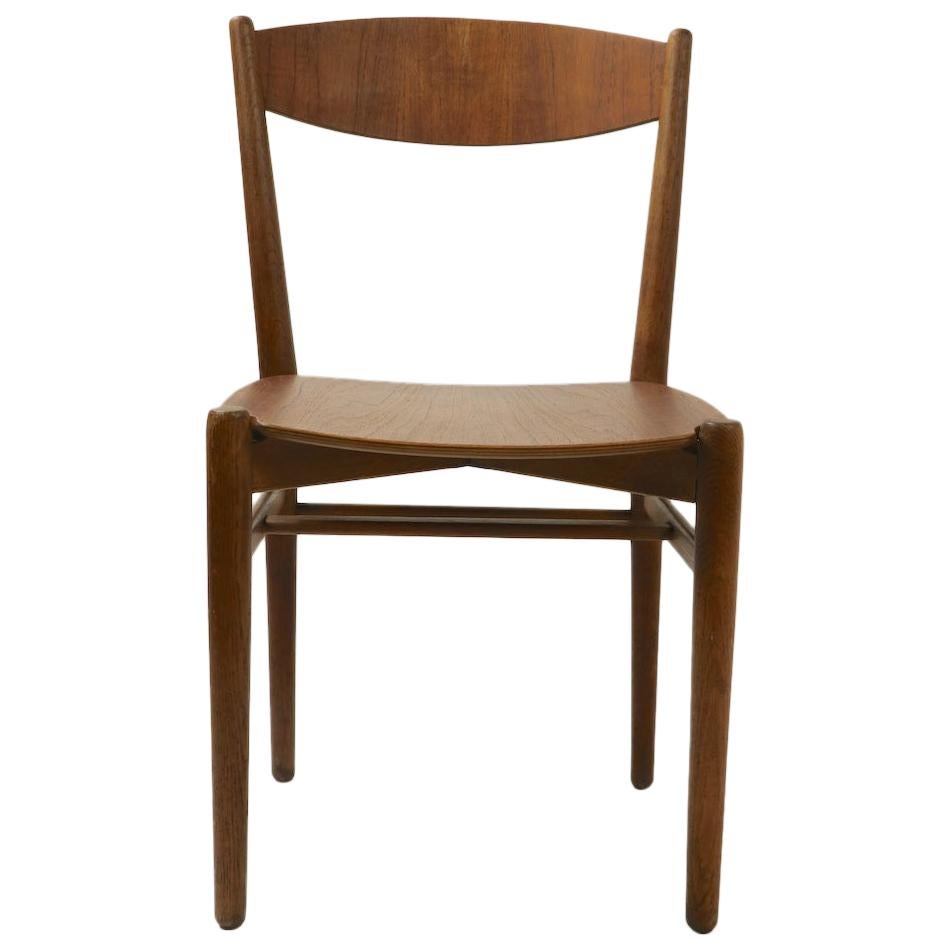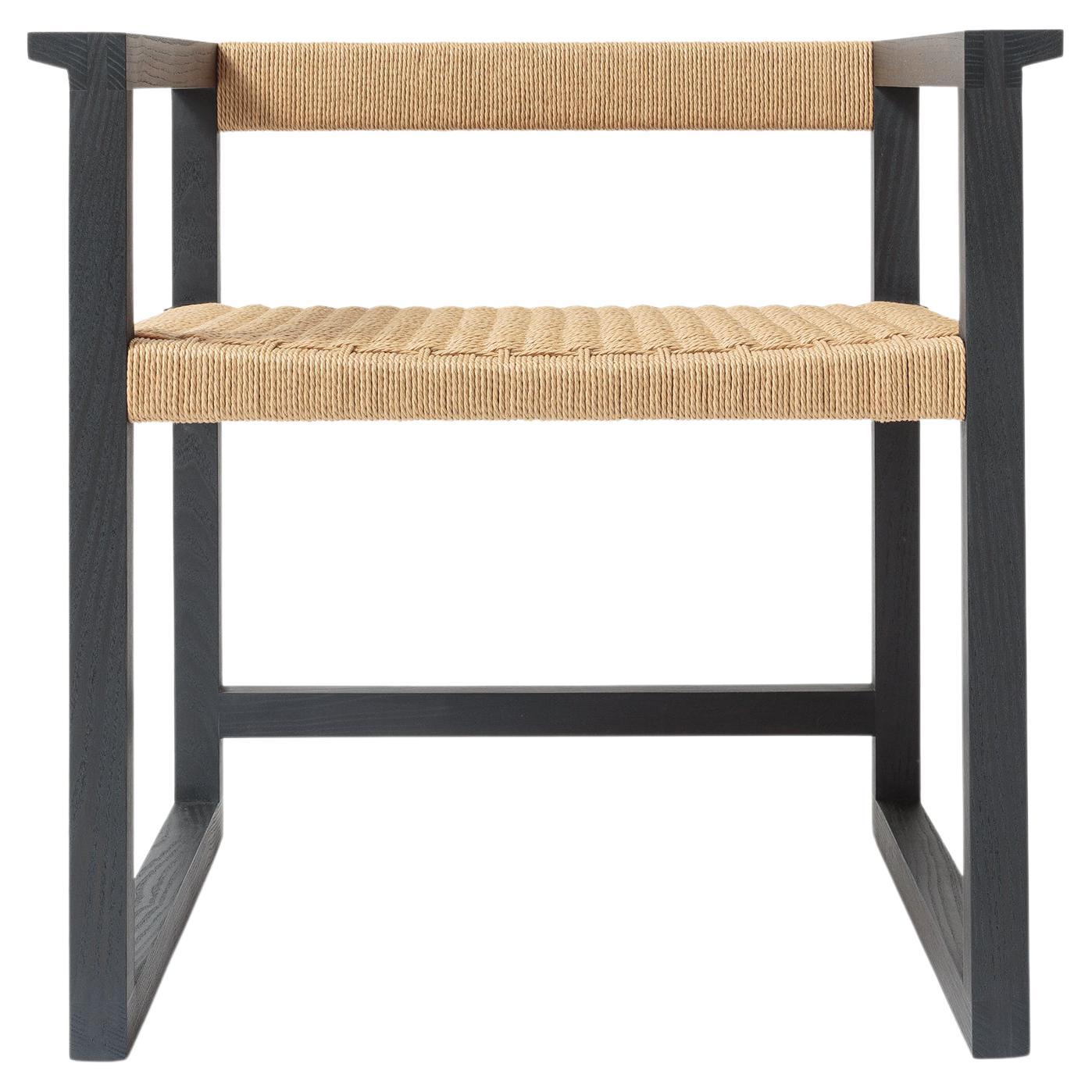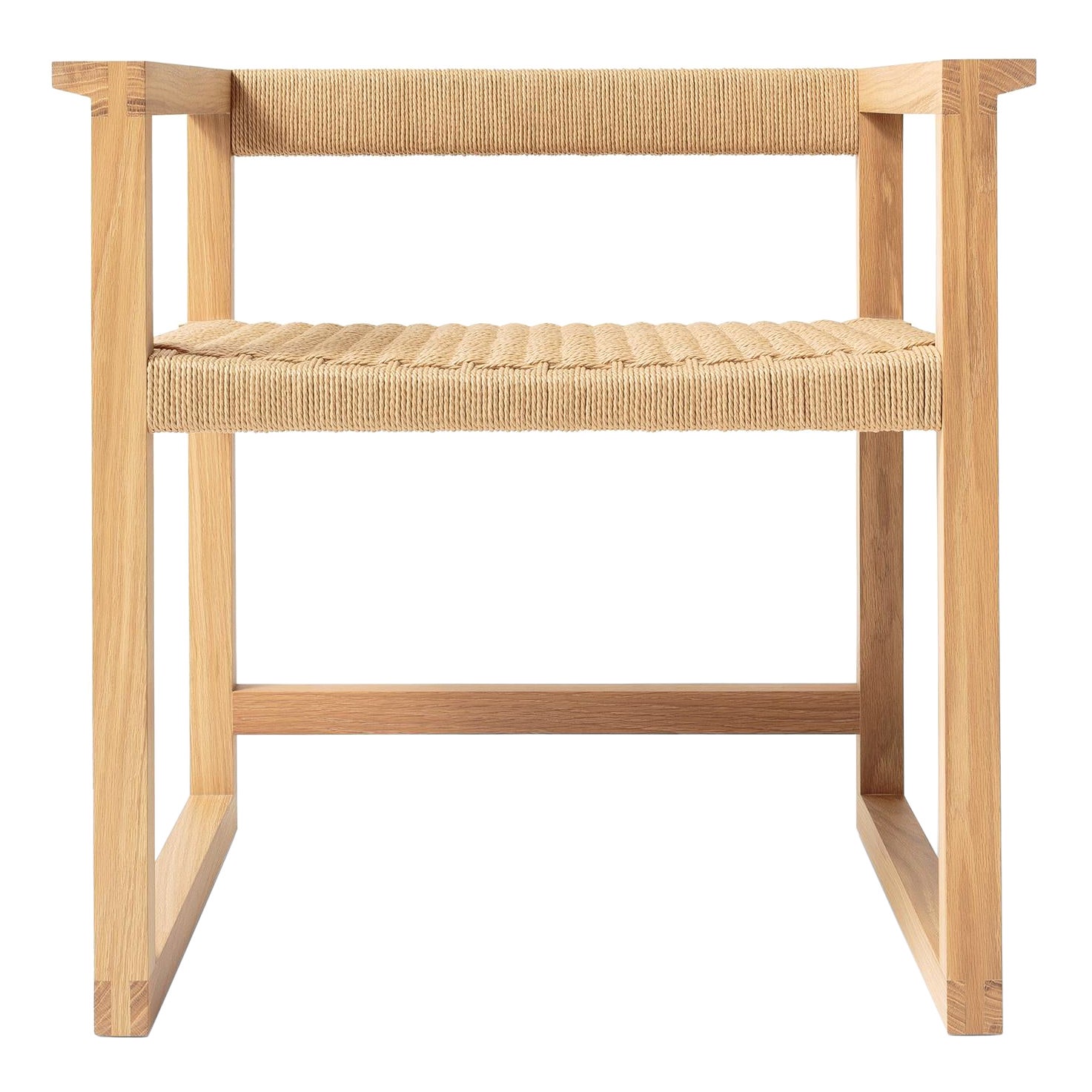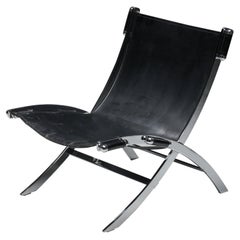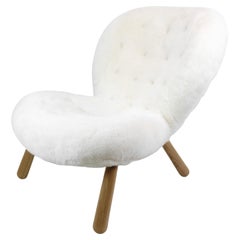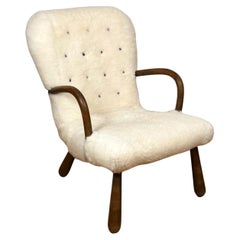
Arctander Clam Chair in Sheepskin by Philip Arctander, Denmark, 1944
View Similar Items
Want more images or videos?
Request additional images or videos from the seller
1 of 13
Arctander Clam Chair in Sheepskin by Philip Arctander, Denmark, 1944
About the Item
- Creator:Nordisk Staal & Møbel Central 1 (Manufacturer),Philip Arctander (Designer)
- Dimensions:Height: 35.44 in (90 cm)Width: 27.56 in (70 cm)Depth: 33.47 in (85 cm)Seat Height: 14.57 in (37 cm)
- Style:Scandinavian Modern (Of the Period)
- Materials and Techniques:
- Place of Origin:
- Period:
- Date of Manufacture:1944
- Condition:Wear consistent with age and use.
- Seller Location:Antwerp, BE
- Reference Number:Seller: GW30871stDibs: LU933430498912
About the Seller
4.8
Gold Seller
These expertly vetted sellers are highly rated and consistently exceed customer expectations.
Established in 2008
1stDibs seller since 2012
981 sales on 1stDibs
Typical response time: 10 hours
More From This SellerView All
- Clam Chair in Sheepskin by Philip Arctander, Denmark, 1944By Philip Arctander, Nordisk Staal & Møbel Central 1Located in Antwerp, BEArctander clam chair; Sheepskin; Philip Arctander; Denmark; 1944; Danish Design; Muslingestol; Scandinavian Design; The Arctander clam chair, also known as the “Muslingestol”, is easily recognizable by its rounded arms, club-shaped legs, and curved, slightly tilted backrest upholstered in the finest sheepskin material. Both craftsmanship and quality are key in this design. Philip Arctander’s whimsical Clam Chair exudes coziness and comfort. It is a piece that would be a remarkable addition to any living space in need of an elegant touch. Danish architect Arctander is mostly known for his directorship at the Danish Building institute and his UN advisory role for affordable housing. His contribution of the now iconic Clam Chair to NY FORM...Category
Vintage 1940s Danish Scandinavian Modern Side Chairs
MaterialsSheepskin, Wood
- ILVA Design Lounge Chair Model Cuba, Black Leather, Denmark, 2000sBy Antonio Citterio, FlexformLocated in Antwerp, BEILVA Design Lounge Chair Model Cuba, with a chromed metal frame and black leather upholstery. Model Cuba was inspired by the "Timeless Chair", an original design by Italian architect...Category
Early 2000s Danish Post-Modern Chairs
MaterialsMetal
- Throne Chair by LorenziniBy LorenziniLocated in Antwerp, BEUnusual and one-of-a-kind Throne chair, Sandro Lorenzini, Italy 1980s Solid wooden panels with ceramic stars and moon inserts. Copper side panels. A fantastic piece made in Italy ...Category
Vintage 1980s Italian Post-Modern Chairs
MaterialsCopper
- Functional art Throne / Chair "Black Caterpillar" by Lionel Jadot, 2020By Lionel JadotLocated in Antwerp, BECollectible Design / Functional art, Lionel Jadot for Everyday Gallery, Belgium 2020 The chair made with scrap metal laser cuts and a prototype element of one of Lionel’s coffee table, the legs are made with the pantograph of a drawing table from the 30s, hung on an inked piece of Japanese wood from the 19th piece of furniture. Born in Brussels in 1969, Lionel Jadot is an interior designer, artist, designer, filmmaker, adventurer. But all at once, preferably. Lionel Jadot is firing on all cylinders. ‘I never throw anything, I pick up everything. Not having a green thumb, I’m trying cuttings, weddings against nature. I never forget a line.’ He’s inviting us in subtle, off-beat worlds, on the edge of reality. Its material is made of dilated time. A wandering spirit, he seeks a protective balance in a hostile world. It is his constant questioning: what happens to the place where we live? For Lionel Jadot, everything is object, everything is history. He draws from other places, other times, and seeks what’s linking them. He sews, stitches, unpicks, blends materials, combines eras. He will enshrine some wood essence in metal, some mineral in a plant, the old in the new. ‘I take extra care to the joint between two materials.’ With him, there is always some play in the parts, as in a piece of machinery. From a kingdom to another, he provokes organic, viral growths, generating energy. Linking past and future, he never forgets a line. ‘I accumulate them.’ He’s inviting us in subtle worlds, off-beat, on the edge of reality. Are we in 1930 or in 2030? Both, no doubt. Its material is made of dilated time. The eye goes hand in hand with the ear. ‘When I walk into a place, I listen to the good (or bad) it does to me. An ineffable feeling.’ He recreates mutant buildings, like the future Royal Botanique, a 5 stars hotel housed in the Church of the Gesu, a former convent behind a 1940 façade. He talks about a ‘hotel object’, which he holds and turns around in his hand. A wandering spirit, he’s flirting with retro-futurism. The Jam, another hotel, is intended for urban travelers, fans of swiftness, fluidity and hospitality. He designs interiors as a set of objects: a motorcycle cut in concrete becomes a bar counter. He finds gothic cartoon echoes, from the likes of Moebius, Alejandro Jodorowsky, Enki Bilal, sets from Garage Hermétique and Blade Runner, a protective balance in a hostile world. Discovering Jadot’s little cosmos of collected and accumulated goods, it becomes clear that every element has its own story. I tried to collect them and in turn, devour them in the coming paragraphs. But first: the show is best experienced seated, barring the distinction between object of use and object of attention, they invite for different types of conversation. The seats, chairs, thrones all make us think of our own physical comportment, and of how the seat lends grandeur to the person sitting on it, by crowning its presence. The crackling floor, the felt walls and the diffuse light slow you down into an oddly absorbing environment, in which you are left puzzled. In the eclectic collages of objects, bits and pieces collected all over the world come together in ways practical, and logical, though possibly only in the artist’s mind. All his finds eventually seem to fall into place. Starting with the mere conception of a chair, rather than with a set-out plan or sketch, the works are intuitively construed out of an archive that one can only imagine the dimensions of. Things forgotten by others, precious for him, were all once designed for their own purpose. Here they find their fit as a base, a closing system or a balancing element. The first piece that opens the exhibition, the most throne-like of all seats in the show, builds around a chair of his grandmother, protected by mops, and harassed with bed springs. As you enter the space, you pass by a shell leaning over a yellow seat that stems from his old Mustang, and find a white stool piece with Mexican leather dog training whips— the white building blocks of which turn out to be dried molding material, as found and broken out of a bucket by workers every morning. Further, the stone piece that reminds one of the stone age, is indeed made of 400 million old rocks, and the soft seats are lent from construction, where these strokes of textile carry up the heaviest goods. In the corner — but as you walk this walk please be seated on any of the thrones and experience the work for a moment— the green fluffy cover is made by XXXX who remakes cartographies of warzones, one of which is here mounted on a flexible fishing chair...Category
2010s European Chairs
MaterialsBrass, Steel
- Post-Modern Pair of Easy Chairs in Chrome & Plastic Wire, 1960sBy René HerbstLocated in Antwerp, BEPostmodern piece, reminiscent of a closed chaise longue, with its sleek design. The subtle translucency of the plastic wire imparts an elegant nude color effect, evoking the image of...Category
Vintage 1960s European Post-Modern Side Chairs
MaterialsChrome
- Elephant Chair by Bernard Rancillac, Limited Edition 37/100, 1985By Bernard RancillacLocated in Antwerp, BEElephant Chair; Fauteil Éléphant; Bernard Rancillac; Limited Edition; 37/100; 1985; 1980s; Bedside Chair; Side Chair; Lobby Lounge Chair; Reading Ch...Category
Vintage 1980s French Space Age Chairs
MaterialsSteel
You May Also Like
- Arctander Chair Loungechair By Philip Arctander Made In Sheepskin From 1960sBy Philip ArctanderLocated in Lejre, DKThe Arctander chair, affectionately known as the (the Clam Chair), designed by Philip Arctander and upholstered with luxurious sheepskin. This lounge chair is renowned for its high q...Category
Vintage 1960s Danish Mid-Century Modern Lounge Chairs
MaterialsSheepskin, Oak
- Philip Arctander Sheepskin Clam Chair by Vik & BlindheimBy Vik & Blindheim, Philip ArctanderLocated in Littleton, CO"Muslingestolen", aka "the clam chair" lounge chair designed in 1944 by Danish architect Philip Arctander. The chair was first produced in Denmark by Nordisk Staal & Mobel Centra...Category
Vintage 1950s Norwegian Scandinavian Modern Lounge Chairs
MaterialsSheepskin, Oak
$12,000 Sale Price25% Off - Danish Lounge Scoop Chair after Philip ArctanderBy Philip ArctanderLocated in South Charleston, WVMeasures 34" tall, 32" deep and 23" wide. The seat height slopes from 13.5 to 16". A unique low profile chair produced, circa 1940 and bears a striking resemblance to a singular scoop lounge chair Philip Arctander did for a client in the 1940s. Beautiful modernist lines with subtle sculpting make this an uncommon chair...Category
Mid-20th Century Scandinavian Modern Lounge Chairs
- “Clam Chair“ by Arnold Madsen 1944 Madsen & Schubell Sheepskin DenmarkBy Madsen & Schubell, Arnold MadsenLocated in Berlin, BEThis “Clam” chair has a beloved design thanks to which it is considered by some as one of the most attractive chairs of “Nordic Design”. The model has a rather perplexing history, and has been attributed to several designers before, the latest being the Danish architect Phillip Arctander. However, recent research revealed that the “Clam” is the model that in fact started the story of Madsen & Schubell. Arnold Madsen designed the chair in 1944 in his small basement workshop in Gothersgade, Copenhagen. This chair has a characteristic organic shape with soft curves, perched on club-shaped beech legs. The name comes from the shape of the seat and back that together form the silhouette of an open clam. The round armrests compliment the overall round feel of the chair. The seat is slightly raised towards the front, while the back is tilted back to provide great sitting comfort. The seat and back are covered in cream-white sheepskin, adding to the soft and cosy feel of this “Clam”. In 1944, the chair was already exhibited in conjunction with the presentation of the newly opened furniture store NY FORM A/S in Copenhagen, which sold leading design of the day. In 1953, Madsen & Schubell sold the licence for the chair to the Norwegian company Vik and Blindheim.Category
Vintage 1940s Danish Scandinavian Modern Lounge Chairs
MaterialsSheepskin, Jute, Beech
- Midcentury Side Chair in Rosewood by Sibast, Danish Design, 1960sBy Helge Sibast, SibastLocated in Lejre, DKSide chair in rosewood, designed by Helge Sibast and made by Sibast cabinetmakers. Great original condition.Category
Vintage 1960s Danish Scandinavian Modern Chairs
MaterialsFaux Leather, Rosewood
- Danish Modern Side Chair Custom Made by Mills, DenmarkBy Bruno MathssonLocated in New York, NYClassic architectural side chair from the Golden Age of Danish Modern furniture design. This example is in very good, original condition, show...Category
Mid-20th Century Danish Scandinavian Modern Chairs
MaterialsWood, Bentwood
Recently Viewed
View AllMore Ways To Browse
1940s Animal Skin Chairs
Arctander Philip
Mid Century Danish Sheepskin Chair
Danish Midcentury Chair Sheepskin
Clam Chairs
Clam Chair
Used Drafting Chair
Used Drafting Chairs
The Clam Chair
Clam Denmark
Arctander Sheepskin
Holmquist Chair
Arctander Clam
Clam Chair Arctander
Arctander Clam Chair
Arctander Chair Sheepskin
Philip Clam
Philip Arctander Clam

